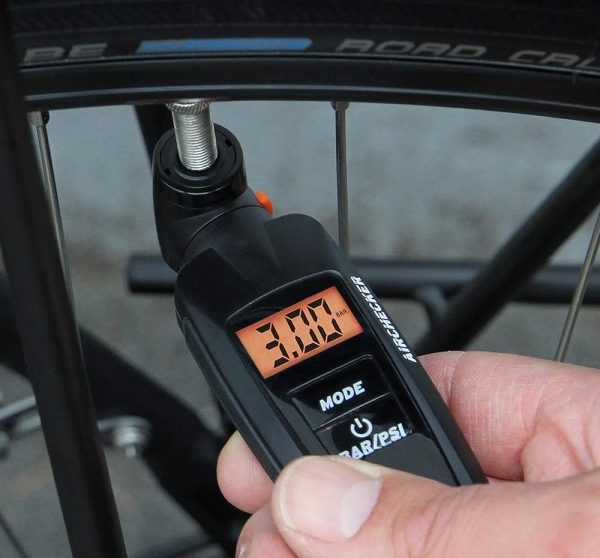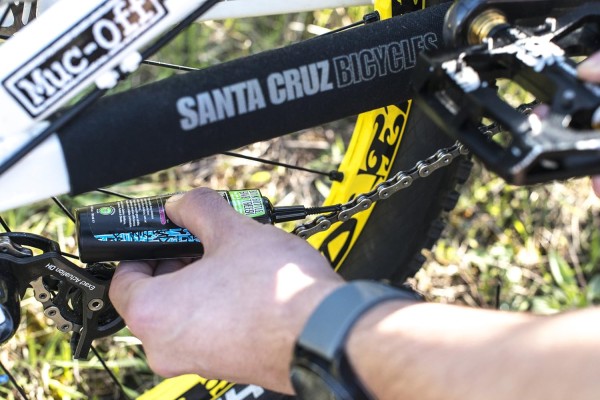Want your bike to ride like it’s gliding on air? Look no further than the secret weapon known as bike chain lube. Just like a well-kept engine purrs, a properly lubricated bike chain ensures your ride stays smooth and efficient.
By using the right technique, you can make sure your bike chain stays in top shape and brings you miles of joy. In this guide, we’ll walk you through the simple steps of using bike chain lube to keep your ride running like a dream.

So grab your bike, get ready to grease up, and let’s dive into the world of bike chain maintenance.
1. Choosing the Right Bike Chain Lube
Choose the right bike chain lube to ensure optimal performance and longevity of your ride. When it comes to selecting the best bike chain lube, there are a few factors to consider.
First, determine the type of riding you’ll be doing. For dry conditions, a dry lube is recommended as it repels dirt and grime. Wet conditions, on the other hand, require a wet lube that can withstand moisture and provide superior lubrication.
Next, consider the viscosity of the lube. Thicker lubes are better suited for long rides and wet conditions, while thinner lubes work well for shorter rides and dry conditions.
Finally, check the compatibility of the lube with your bike chain material. Some lubes are specifically designed for certain chain types, such as stainless steel or nickel-plated chains.
2. Preparing Your Bike Chain for Lubrication
To prepare your bike chain for lubrication, gather a clean rag, a degreaser, and a chain cleaning tool. Start by placing the clean rag underneath the chain to catch any drips or debris.
Next, apply the degreaser to the rag and wipe down the entire length of the chain, ensuring that all dirt, grime, and old lube are removed. Use the chain cleaning tool to further scrub the chain, rotating the pedals backward to ensure thorough coverage.
Pay close attention to the cassette and chainrings, as these areas can accumulate a significant amount of dirt and grime. Once the chain is clean, wipe it down again with a clean rag to remove any excess degreaser. Your bike chain is now ready for lubrication, ensuring a smooth and efficient ride.
Applying Bike Chain Lube Properly
Now that your bike chain is clean and free from dirt and grime, it’s time to properly apply bike chain lube to ensure optimal performance. Follow these steps to apply bike chain lube correctly:
- Start by shaking the bottle of bike chain lube to ensure it’s well-mixed and ready for application.
- Apply a small amount of lube to the inner side of the chain while turning the pedals backward. Make sure to cover the entire length of the chain, avoiding excess lube that could attract more dirt.
- Allow the lube to penetrate the chain for a few minutes before wiping off any excess with a clean rag.
- Remember to apply lube to the derailleur pulleys and any other moving parts that require lubrication.
- After applying the lube, let it dry for at least 15 minutes before riding your bike.
Regularly inspect your chain to determine when it needs reapplication of bike chain lube.
Maintaining and Cleaning Your Bike Chain
To maintain optimal performance, regularly clean and lubricate your bike chain.
Cleaning your bike chain is essential as it helps to remove dirt, grime, and debris that can accumulate over time. Start by using a brush specifically designed for cleaning bike chains to scrub away any buildup. Pay close attention to the areas around the chainrings and rear cassette, as these tend to collect the most dirt.
After cleaning, ensure that the chain is completely dry before applying lubricant. Use a high-quality bike chain lubricant and apply it evenly along the length of the chain while turning the pedals backward. Wipe off any excess lubricant to prevent dirt and debris from sticking to the chain.
Troubleshooting Common Bike Chain Lube Issues
If you’re experiencing issues with your bike chain lube, try troubleshooting common problems to ensure optimal performance.
Here are some common bike chain lube issues and how to address them:
- Chain skipping: If your chain is skipping or jumping gears, it could be due to insufficient lubrication. Clean the chain thoroughly and apply a fresh coat of lube, ensuring all links are evenly coated.
- Excessive chain noise: If your chain is making excessive noise, it may be over-lubricated. Wipe off excess lube with a rag and allow it to dry before riding.
- The build-up of dirt and grime: Over time, dirt and grime can accumulate on your chain, affecting its performance. Regularly clean your chain using a degreaser and a brush, then reapply fresh lube.
Frequently Asked Questions
How Often Should I Apply Bike Chain Lube?
You should apply bike chain lube regularly to keep your ride running smoothly. The frequency of application depends on various factors such as riding conditions, weather, and mileage. As a general guideline, it’s recommended to lube your bike chain every 100-200 miles or every 2-4 weeks if you ride frequently.
However, it’s important to inspect your chain regularly for signs of dirt, grime, or dryness, and lube it whenever necessary to maintain optimal performance.
Is It Necessary to Clean My Bike Chain Before Applying Lube?
Yes, it’s necessary to clean your bike chain before applying lube. Cleaning the chain removes dirt, grime, and old lubricant that can cause friction and wear on the chain. A clean chain allows the lube to penetrate and protect the moving parts more effectively, reducing friction and prolonging the life of your chain.
What Should I Do if My Bike Chain Starts to Make Noise After Applying Lube?
If your bike chain starts to make noise after applying lube, don’t panic. First, check if the chain is properly lubricated. If it’s too dry, add more lube. If the noise persists, it may be a sign of dirt or debris buildup. In that case, clean the chain thoroughly and reapply the lube. If the noise continues, it could be a sign of a worn or damaged chain, in which case it may need to be replaced.
Can I Use WD-40 as a Bike Chain Lubricant?
Using WD-40 as a bike chain lubricant might seem like a quick fix, but it’s not recommended. WD-40 is a solvent, not a lubricant, and can remove the existing lubricant from your chain. This can lead to increased friction, wear, and noise.
To keep your ride running smoothly, it’s best to use a dedicated bike chain lube that’s specifically designed to reduce friction and protect your chain from wear and tear.
Conclusion
By choosing the right bike chain lube, properly preparing and applying it to your bike chain, and regularly maintaining and cleaning your chain, you can ensure a smooth and efficient ride. However, it’s important to be aware of common bike chain lube issues that may arise and troubleshoot them accordingly. By following these steps, you can prolong the lifespan of your bike chain and enjoy a seamless cycling experience.





